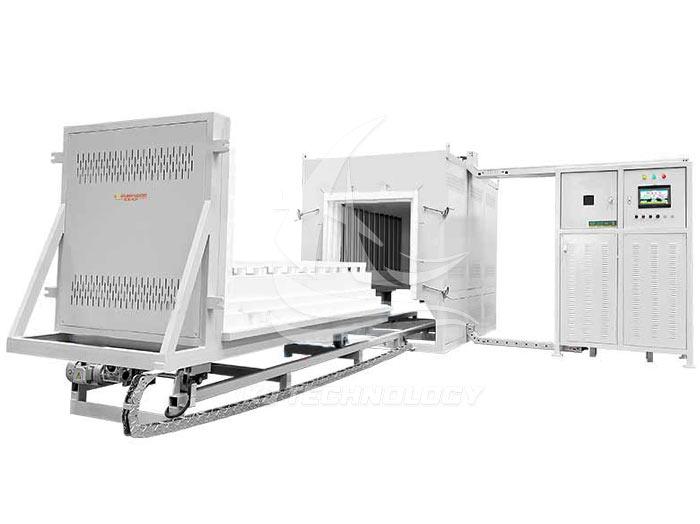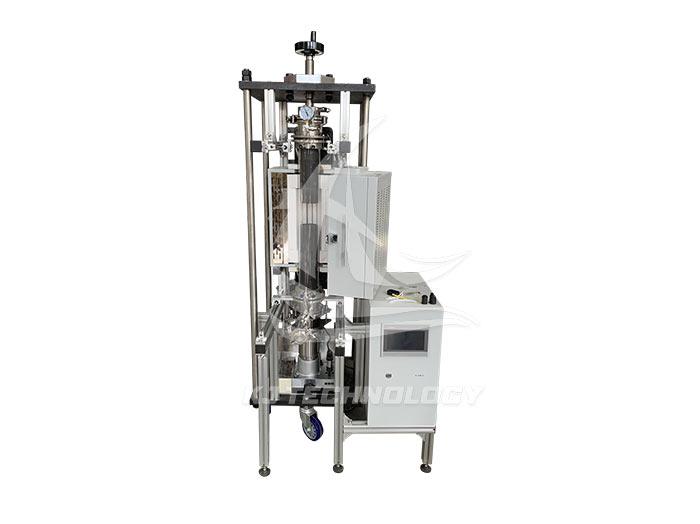Application of High Temperature Vacuum Brazing Furnace in the New Energy Industry
 11-20-2025 Author: KJ technology
11-20-2025 Author: KJ technology
High temperature vacuum brazing furnaces are widely and critically used in the new energy industry, especially in the fields of hydrogen fuel cells, electric vehicle batteries, and solar energy. Their technological advantages significantly improve equipment performance and reliability. Specific application scenarios and advantages are as follows:
1. Hydrogen fuel cell: improving the performance of bipolar plates and core components
Bipolar plate brazing
Technological breakthrough: Efficient connection of metal bipolar plates is achieved through vacuum brazing, with a high welding qualification rate and an average annual energy saving per device, helping customers improve production efficiency.
Advantage:
Corrosion resistance: Vacuum environment avoids oxidation, high weld density, significantly improving the durability of bipolar plates in acidic environments.
Sealing: The joint strength is close to the base material, ensuring zero leakage of the hydrogen circulation system and meeting the long-term operation requirements of fuel cells.
Low temperature process: Adopting low-temperature brazing technology (such as the patented process of Wintech Technology), the material deformation is controlled within 0.1mm, which improves the accuracy compared to traditional processes.
Core components such as hydrogen circulation pump
Application case: Vacuum brazing is used for precision connection of hydrogen circulation pumps, eliminating defects such as pores and cracks, improving the reliability of the pump body in high-pressure hydrogen environments, and extending its service life.
2. Electric vehicle battery: optimizing electrode and wire connections
Manufacturing of battery modules
Technical implementation: By vacuum brazing the electrodes and wires of battery cells, efficient bonding of dissimilar materials (such as copper and aluminum) is achieved.
Advantage:
High conductivity: Low joint resistance, reduces energy loss, and improves the overall efficiency of the battery pack.
High thermal conductivity: Uniform thermal field control avoids local overheating, ensures temperature consistency of the battery pack, and extends cycle life.
Lightweight: Supports welding of thin-walled structures, helps reduce weight of battery packs, and enhances the endurance of electric vehicles.
Motor casing and power electronic components
Application case: Vacuum brazing is used for sealing connections of motor housings, as well as manufacturing heat dissipation structures for power electronic devices such as IGBT modules, to improve equipment's high temperature resistance and vibration resistance.
3. Solar energy field: ensuring the stability of photovoltaic equipment
Manufacturing of photovoltaic panels
Technical implementation: Vacuum brazing is used for metalized interconnection of photovoltaic panels, connecting silver paste electrodes with silicon wafers.
Advantage:
Non oxidation welding: avoids the increase of contact resistance caused by silver electrode oxidation, and improves the photoelectric conversion efficiency.
High precision control: Temperature field uniformity ≤ ± 5 ℃, ensuring consistent solder joint size and reducing fragmentation rate.
Solar collector
Application case: Vacuum brazing connects copper pipes and aluminum fins in collectors to improve thermal conductivity efficiency, while preventing high-temperature oxidation and corrosion, and extending equipment life.
4. Summary of Technological Advantages: The Core Driving Force of the New Energy Industry
Non oxidizing environment: The vacuum degree can reach 10 ⁻³ -10 ⁻⁴ Pa, completely isolating oxygen, avoiding material oxidation, and ensuring welding quality.
Uniform thermal field: Temperature uniformity ≤ ± 5 ℃, eliminating thermal stress, preventing deformation of thin-walled structures, and adapting to the lightweight requirements of new energy equipment.
High strength joint: The metallurgical bonding strength is close to that of the base material, and it can withstand extreme working conditions such as high temperature, high pressure, and corrosion, improving equipment reliability.
Environmental protection and energy saving: No need for soldering flux, reducing harmful gas emissions, in line with green manufacturing standards; Efficient insulation design reduces energy consumption.








